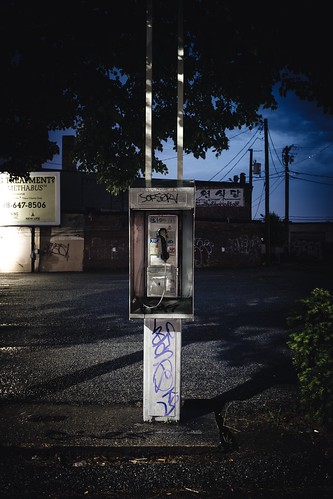On the scooter version of your Wheelchair Abilities Training system . The intervention will probably be held within the neighborhood of the participants, located inside the Higher Vancouver Regions District of British Columbia, Canada. The intention of conducting the study within the neighborhood on the participant will be to facilitate the transferability of training and to enhance the ecological validity. In addition, education inside the community aims to reduce participant burden of travelling to our research web page, and to improve adherence. These neighborhoods are all located inside an urban setting, and locations incorporate, but are certainly not restricted to, neighborhood centers, grocery retailers, and parks. SCOOT for scooter mobility skills is going to be supplied by occupational therapist trainers who might be educated by the principal investigator to work with the identical standardized strategy. The therapist will keep a record on the capabilities that they’ve taught and hours of instruction provided. Throughout coaching sessions, the therapist delivering the intervention will record any adverse effects in the intervention including falls. We will collect data around the variety of therapist visits, length of visits, therapist years of practice, years of practical experience working in this region, and therapist qualifications.Outcome measures Main outcome measure (subjective talent capacity)SCOOT is a communitybased, clientcentered intervention that embeds capabilities instruction into social activities thatThe subjective version of Kirby et al.’s Wheelchair Skills Test for scooters incorporates three domains of expertise training, namely skill capacity, self-confidence, and functionality. For this study, the primary outcome measure will likely be perceived capacity. It consists of items that happen to be scored by the participant from to , where unsafe or unable, protected with difficulty, and protected without having difficulty; a percent score is calculated by dividing the total score by the number of applicable items and multiplying that number by . The measure assesses simple indoor mobility skills (driving forward and Tunicamycin web backwards), transfers on and off the scooter, and outdoorMortenson et al. Trials :Page ofdriving abilities, which includes maneuvering, curbs, and ramps. The intraclass correlation coefficient (ICC) for week testretest reliability on the Wheelchair Skills Test among energy wheelchair customers is . (self-assurance interval, ) . As scooters and energy wheelchairs are both motorized mobility devices, a equivalent reliability amongst scooter customers is anticipated.Secondary outcomes (body structure and function and activity and participation levels)Scooter skills self-assurance inside the social environment We are going to make use of the shortened version of the social atmosphere scale in the Wheelchair Use Self-assurance Scale for manual wheelchair customers that was created by Sakakibara to assess scooter users’ self-assurance negotiating their social milieu. For this study the word wheelchair was replaced with scooter. The scale uses an point scale ( not confident to totally confident) as well as a total mean score in between and can be calculated by obtaining the sum  on the scores of PubMed ID:https://www.ncbi.nlm.nih.gov/pubmed/17174591 each and every item. Scooter use and incidents Participants is going to be asked to keep a diary of any UNC1079 web scooterrelated adverse events, such as the followingtips or falls from the scooter, injuries to self, accidental speak to with other individuals, injuries to other individuals, and harm to home. Participants is going to be asked to record the quantity
on the scores of PubMed ID:https://www.ncbi.nlm.nih.gov/pubmed/17174591 each and every item. Scooter use and incidents Participants is going to be asked to keep a diary of any UNC1079 web scooterrelated adverse events, such as the followingtips or falls from the scooter, injuries to self, accidental speak to with other individuals, injuries to other individuals, and harm to home. Participants is going to be asked to record the quantity
of hours every day that they use their scooters over the course with the study.Descriptive measures and covariates (body functio.Around the scooter version with the Wheelchair Expertise Education plan . The intervention is going to be held inside the neighborhood of the participants, situated within the Higher Vancouver Regions District of British Columbia, Canada. The intention of conducting the study inside the neighborhood with the participant is usually to facilitate the transferability of training and to enhance the ecological validity. Additionally, training inside the neighborhood aims to reduce participant burden of travelling to our investigation internet site, and to enhance adherence. These neighborhoods are all located inside an urban setting, and areas incorporate, but will not be limited to, community centers, grocery shops, and parks. SCOOT for scooter mobility skills will likely be offered by occupational therapist trainers who will likely be educated by the principal investigator to use the exact same standardized strategy. The therapist will hold a record of your capabilities that they have taught and hours of training provided. Throughout coaching sessions, the therapist delivering the intervention will record any adverse effects on the intervention which include falls. We are going to collect data on the variety of therapist visits, length of visits, therapist years of practice, years of expertise working in this area, and therapist qualifications.Outcome measures Primary outcome measure (subjective ability capacity)SCOOT is often a communitybased, clientcentered intervention that embeds expertise training into social activities thatThe subjective version of Kirby et al.’s Wheelchair Skills Test for scooters incorporates three domains of skills training, namely talent capacity, self-assurance, and functionality. For this study, the major outcome measure are going to be perceived capacity. It consists of products that happen to be scored by the participant from to , where unsafe or unable, safe with difficulty, and protected without having difficulty; a % score is calculated by dividing the total score by the amount of applicable items and multiplying that number by . The measure assesses standard indoor mobility abilities (driving  forward and backwards), transfers on and off the scooter, and outdoorMortenson et al. Trials :Page ofdriving capabilities, including maneuvering, curbs, and ramps. The intraclass correlation coefficient (ICC) for week testretest reliability in the Wheelchair Skills Test among energy wheelchair customers is . (confidence interval, ) . As scooters and energy wheelchairs are each motorized mobility devices, a similar reliability amongst scooter users is anticipated.Secondary outcomes (physique structure and function and activity and participation levels)Scooter abilities confidence in the social atmosphere We will use the shortened version with the social environment scale on the Wheelchair Use Self-assurance Scale for manual wheelchair customers that was created by Sakakibara to assess scooter users’ self-assurance negotiating their social milieu. For this study the word wheelchair was replaced with scooter. The scale uses an point scale ( not confident to fully confident) plus a total imply score involving and may be calculated by locating the sum with the scores of PubMed ID:https://www.ncbi.nlm.nih.gov/pubmed/17174591 each item. Scooter use and incidents Participants is going to be asked to maintain a diary of any scooterrelated adverse events, like the followingtips or falls in the scooter, injuries to self, accidental contact with other people, injuries to other people, and damage to home. Participants will be asked to record the number
forward and backwards), transfers on and off the scooter, and outdoorMortenson et al. Trials :Page ofdriving capabilities, including maneuvering, curbs, and ramps. The intraclass correlation coefficient (ICC) for week testretest reliability in the Wheelchair Skills Test among energy wheelchair customers is . (confidence interval, ) . As scooters and energy wheelchairs are each motorized mobility devices, a similar reliability amongst scooter users is anticipated.Secondary outcomes (physique structure and function and activity and participation levels)Scooter abilities confidence in the social atmosphere We will use the shortened version with the social environment scale on the Wheelchair Use Self-assurance Scale for manual wheelchair customers that was created by Sakakibara to assess scooter users’ self-assurance negotiating their social milieu. For this study the word wheelchair was replaced with scooter. The scale uses an point scale ( not confident to fully confident) plus a total imply score involving and may be calculated by locating the sum with the scores of PubMed ID:https://www.ncbi.nlm.nih.gov/pubmed/17174591 each item. Scooter use and incidents Participants is going to be asked to maintain a diary of any scooterrelated adverse events, like the followingtips or falls in the scooter, injuries to self, accidental contact with other people, injuries to other people, and damage to home. Participants will be asked to record the number
of hours per day that they use their scooters more than the course of your study.Descriptive measures and covariates (physique functio.
